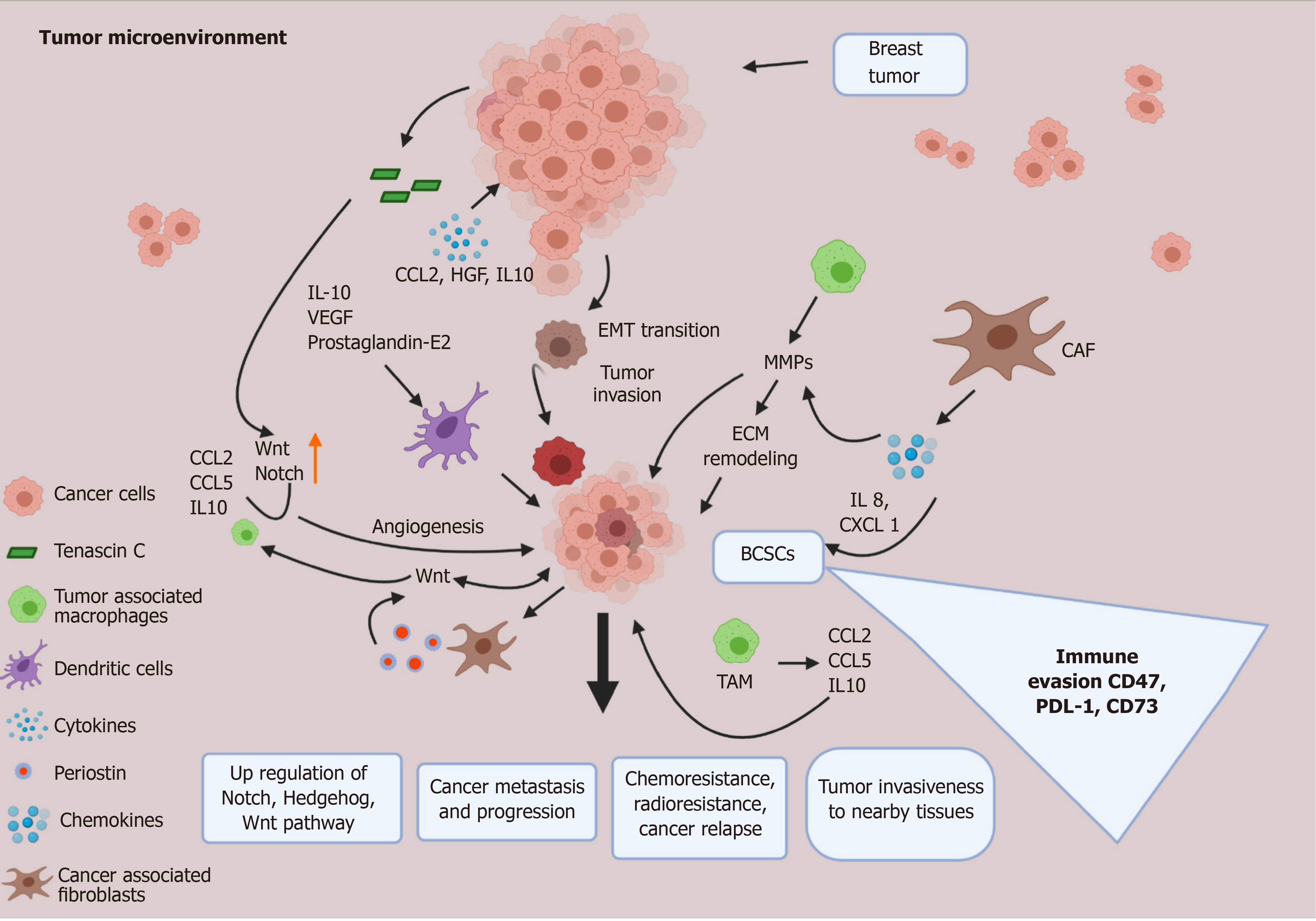Copyright
©The Author(s) 2021.
World J Stem Cells. Jul 26, 2021; 13(7): 841-860
Published online Jul 26, 2021. doi: 10.4252/wjsc.v13.i7.841
Published online Jul 26, 2021. doi: 10.4252/wjsc.v13.i7.841
Figure 4 Tumor microenvironment and breast cancer stem cell crosstalk.
The tumor microenvironment (TME) plays a critical role in the development as well as the maintenance of breast cancer stem cells. Various signaling molecules secreted by the normal and transformed cells of the TME, such as cancer associated fibroblasts, M2 tumor associated macrophages, endothelial cells and other immune cells, act in a paracrine manner to influence the breast cancer stem cells, which in turn use a positive feedback system to sustain the cells of the TME. In this way the TME and breast cancer stem cells work in a concerted manner to support stemness, chemoresistance, immune evasion and metastatic potential of breast cancer. CAF: Cancer associated fibroblasts; IL: Interleukin; VEGF: Vascular endothelial growth factor; EMT: Epithelial mesenchymal transitions; BCSCs: Breast cancer stem cells; TAM: M2 tumor associated macrophages; PD-L1: Programmed cell death-ligand 1; ECM: Extracellular matrix; HGF: Hepatocyte growth factor.
- Citation: Khan S, Suryavanshi M, Kaur J, Nayak D, Khurana A, Manchanda RK, Tandon C, Tandon S. Stem cell therapy: A paradigm shift in breast cancer treatment. World J Stem Cells 2021; 13(7): 841-860
- URL: https://www.wjgnet.com/1948-0210/full/v13/i7/841.htm
- DOI: https://dx.doi.org/10.4252/wjsc.v13.i7.841









